Living Your Best Life with Low Vision
Featuring
Ranjoo Prasad, O.D.
Staff Optometrist, Philadelphia VA Medical Center; Board Member, VisionLink Philadelphia
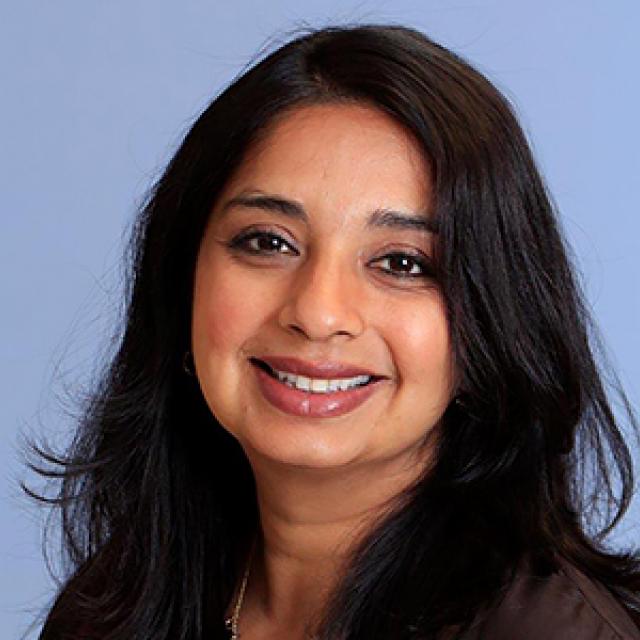

Ranjoo Prasad, O.D.
Staff Optometrist, Philadelphia VA Medical Center; Board Member, VisionLink Philadelphia

Ranjoo Prasad, OD discusses how to “live your best life” with low vision. Learn how to improve your quality of life by using low vision devices, making adaptations to your hobbies and tasks, making the most of lighting, and finding services to assist in identifying the best strategies for you.
Please note: This Chat may have been edited for clarity and brevity.
MS. DIANA CAMPBELL: Hello, and welcome to this month’s BrightFocus Chat. I’m Diana Campbell with BrightFocus Foundation. I want to give you a warm welcome to today’s Chat, “Living Your Best Life with Low Vision.” We’ll spend about half an hour learning about low vision services and ways that you can make the most of your remaining vision. If today is your first time on a BrightFocus Chat, welcome. Let me take a moment to tell you about BrightFocus and what we will do today. BrightFocus Foundation funds some of the top researchers in the world. We support scientists who are trying to find cures for macular degeneration, glaucoma, and Alzheimer’s disease. We share the latest news and developments from these scientists with families who are impacted by these diseases. We have a number of free publications and plenty of materials on our website, www.BrightFocus.org, that offer tips for living with diseases such as macular degeneration. Today’s BrightFocus Chat is another way of sharing this information. We’re really fortunate to be joined today by someone you may have heard from previously on a Chat, Dr. Ranjoo Prasad, who is a staff optometrist at the Philadelphia VA Medical Center, and a board member for an organization called VisionLink, also located in Philadelphia. With all of that said, Dr. Prasad, welcome back, and thanks for joining us again. I know you’ve been in the field for a few decades now, but before we get started, can you please tell us a little bit about your background in the field and your areas of expertise?
DR. RANJOO PRASAD: Sure. Thank you so much for having me, Diana. I always look forward to these Chats. I’m an optometrist. I specialize in a field called low vision rehabilitation. I’ve been practicing for well over 23 years. I was formerly the director of the Low Vision Center at the Scheie Eye Institute for 21 years, and currently I am working at the Philadelphia VA Hospital. I’m a board and committee member of an organization that is called VisionLink, which we’ll talk about a little bit later. But it’s an organization that provides resources and services for the blind and visually impaired in the Philadelphia area.
MS. DIANA CAMPBELL: Great. We’re looking forward to hearing more about that. So, let’s start. For people who have had good vision most of their life, it must be hard to come to grips with the fact that now they have low vision and are facing difficulties doing the things that they’re accustomed to doing without thinking twice. So, to start, what exactly does low vision mean?
DR. RANJOO PRASAD: So, there are so many ways to define low vision, but I like to say that low vision occurs when an individual has an eye condition that affects their vision and it can’t be corrected further by medical, surgical, or optical means. So, you know, basically this is where someone will be told that nothing more can be done, and it’s just based on that—medical, surgical, or conventional optical means. And what happens is it results in difficulty performing daily tasks. So, how I like to summarize it is by saying that it’s just basically a reduction in visual function that’s typically caused by an eye disease that can’t be corrected further.
MS. DIANA CAMPBELL: Okay. That makes sense. So, it’s not just your visual acuity or something like that. It’s something where you’ve done everything you can, and then you have to make accommodations otherwise.
DR. RANJOO PRASAD: Correct.
MS. DIANA CAMPBELL: Another question that people ask frequently is: What is the difference between having low vision and being determined legally blind, and how does someone find out if they [have reached that stage?].
DR. RANJOO PRASAD: Yeah. So, basically, the difference is that low vision pertains to function, in that there’s a reduction in visual function as a result of their uncorrectable eye condition. And the term “legally blind” was actually determined by the government. It’s the level of either visual acuity or extent of visual field, so a reduction in your visual field—your side vision—that a person has in order to qualify for certain benefits pertaining to disability. And, you know, someone who is legally blind has low vision, but someone who has low vision may not necessarily be legally blind.
MS. DIANA CAMPBELL: Okay, great. Thank you for clarifying that. I actually get asked that question quite frequently. What advice do you have for someone who wants to make the most of their remaining vision? In other words, when one is motivated to reach out for help, what are some good first steps for finding the right support?
DR. RANJOO PRASAD: So, I always tell people or individuals to basically be attentive to what they’re doing on a daily basis, and if you’re having problems reading or seeing the food on your plate—anything that pertains to daily tasks—just let your doctor know. Let somebody know, and typically your eye doctor will be able to refer you to other low vision providers or to resources that could help you further. Most importantly just let your eye doctor know.
MS. DIANA CAMPBELL: Perfect. And you mentioned other providers, and that leads us to our next question, which is: There’s essentially an alphabet soup of titles and initials for the various types of providers specializing in this area that oftentimes people aren’t familiar with—the acronyms. What is a low vision specialist, to start; and if your eye doctor doesn’t refer you, how do you find one?
DR. RANJOO PRASAD: Okay. So, there are many individuals who work in the field of low vision, and a “specialist” can refer to many different people. However, a low vision specialist is typically an eye doctor who is most of the time an optometrist that is specialty trained. You know, he or she examines and evaluates and prescribes special specialized glasses or devices to help individuals with their goals. You know, you can find of them, first, by contacting your eye doctor, for sure, but then also reaching out to a division of senior services. You can reach out to the state agencies or local agencies, as well.
MS. DIANA CAMPBELL: Okay. And are these initial visits typically covered by Medicare or other insurance?
DR. RANJOO PRASAD: Yes. Most vision evaluations are reimbursable by private insurers and Medicare, as are occupational therapists who help train individuals with their daily tasks who have low vision. Yes, they are reimbursable.
MS. DIANA CAMPBELL: Awesome. That’s great news. Okay, so can we walk through some of the other specialists in the field that might assist in working around the loss of central vision due to AMD? And I guess, as we kind of walk through that, how does one evaluate which provider would be the best match for their specific needs? I’ll walk through the list of acronyms, and if you could kind of briefly explain the role that each specialty would have in improving life with vision loss. So, we’ll go ahead and start with a low vision therapist.
DR. RANJOO PRASAD: Yeah. Low vision therapists are individuals who are specially … who are trained to have an education where they are able to perform functional assessments of those who have an eye disease, and I kind of relate that to … they do an assessment, and then they can apply to that their functional difficulty for doing a particular task. So, example, these individuals are in school, they’re in government institutions, they can be in vocation … they could be part of a vocational program. So, for example, the person has a visual impairment, and they have difficulty seeing a computer, or they could be out there in that environment and see ways to help them. They use adaptive techniques, and they also train individuals using low vision devices, such as magnifiers and telescopes.
MS. DIANA CAMPBELL: Okay. And if someone is Googling different providers perhaps that their insurance covers, the acronym for a low vision therapist would be LVT, correct?
DR. RANJOO PRASAD: Correct. Yeah. Yes, that’s correct. LVT. Yeah.
MS. DIANA CAMPBELL: Okay. The next one on the list is a certified vision rehabilitation therapist, or a CVRT. What is their role?
DR. RANJOO PRASAD: So, their role is similar to a low vision therapist, however, they work with … predominantly with utilizing compensatory techniques, environmental adaptations, modifications. They use adaptive equipment. These individuals can teach Braille, and there are also ones that specialize in working with people who are blind—you know, predominantly blind or who have profound vision loss—and these individuals require utilizing other senses, such as touch or hearing.
MS. DIANA CAMPBELL: Okay, great. The next one—and I’ll go ahead and say now that we’ll be having this particular [specialist on our Chat next month—but if you could walk us through what an occupational therapist, or an OT, does and what their role is in helping people with low vision.
DR. RANJOO PRASAD: So, occupational therapists, or OTs, are health care professionals that focus on basically enabling people to do the things they want to do or need to do in their everyday lives, and these are individuals—many of them—who have specialized training in low vision. So, they’re able to help a person, let’s say, if they have difficulty in the kitchen—they have difficulty cooking, using the microwave—they use compensatory techniques, adaptive aids. They’re also licensed professionals, so they will be covered by insurance—Medicare and private insurers.
MS. DIANA CAMPBELL: Oh, that’s great. That’s great. Yes. In the past, this is one we frequently hear frustrations with. And I think you mentioned that often the low vision specialist is a low vision optometrist. Is there anything else that we should go over about a low vision optometrist?
DR. RANJOO PRASAD: Oh, yes. They have a very important role. You know, they are usually the first line of a referral from their medical eye doctor or their eye doctor that takes care of their disease. So, if they have … if they tell their doctor that they’re having difficulty seeing faces or reading, the first place that I refer them to is probably a low vision optometrist. And a low vision optometrist, you know, performs a detailed functional history and medical and ocular history and, you know, they’re both to help an individual achieve their goals and do the things that they’d like to do again better. And they also perform a comprehensive evaluation; prescribe classes, devices such as magnifiers; and in addition, they provide referrals to services and resources, as well.
MS. DIANA CAMPBELL: Is this a provider that one would go back to over time if their vision deteriorates?
DR. RANJOO PRASAD: Yes. Yes, absolutely, because at different steps of their vision, they would have different needs and different … you know, there’d be different aids for them should their vision progress … or vision loss progress.
MS. DIANA CAMPBELL: And you mentioned that the optometrist is covered by insurance. Is it kind of on a case-by-case basis for the other specialties, or are there are others that are sort of more broadly covered by insurance?
DR. RANJOO PRASAD: Yeah. So, the other therapists, like the CVRT and the LVT, typically aren’t covered by insurances because it has to do with licensing. They’re certified, but a licensed … you know, occupational therapists are licensed, and they have their own medical provider number, etc., so those are covered by insurances.
MS. DIANA CAMPBELL: Okay, great. Definitely. Okay, so moving on from the alphabet soup, I know one of the biggest disappointments that people tend to experience is difficulty in doing the hobbies they love that require close vision. I’m thinking of people like artists and photographers who depend on their eyes. Are there adaptations or new technologies that might help them get better results? And we did actually get an example of this from Carol in New York, who wrote and said, “I play Mahjong, and I have trouble seeing the tiles. Is there any help?” What would you advise to people who depend on their eyes or need that close vision to do the things that they love?
DR. RANJOO PRASAD: Well, first I’ll tell you, let your doctor know. They would probably refer you to a low vision … to an optometrist, a low vision specialist. It all depends on the level of vision—your visual acuity, your peripheral vision—and also what you would want to do. So, for example, you were talking about a photographer. I’ve had many photographers over the years, and photographers who adapt, who started off as film and then now have gone digital. So, one example with that is that you could have your camera kind of synced with a laptop so when you shoot a picture, even though you may not see it on the screen or through the eyepiece, you could enlarge it to get it on the screen, so you have a better idea of what you’re seeing. To answer Carol’s question, you know, for her, again, it depends on her level of acuity and seeing how far away the tiles are. There are different devices that can definitely help with that. You know, there’s different, like, reading telescopes; there’s different … even technology, too. There are different types of technology. You can use a camera that’s attached to a laptop, [inaudible] to enlarge it. So, there’s different ways. It would all have … it would all depend on what level of acuity they may have.
MS. DIANA CAMPBELL: Okay. Really quickly, going back if you don’t mind, as we were talking, one of our listeners, Sheila, asked, “What [qualifications] to look for in a low vision therapist?” Are there additional letters behind their name? Other than being covered by their insurance, is there anything they need to look for as they look for a low vision therapist?
DR. RANJOO PRASAD: Basically, a certification. However, if you get connected to state agencies, they usually employ and have the certified—certified therapists working for them. They would also know private therapists, as well.
MS. DIANA CAMPBELL: Okay, wonderful. I just wanted to make sure to get that in. Thanks for being flexible. Okay, back to our next question—which is another big area of discussion and desire for information—is lighting, and there are asking a few questions, so I’ll go ahead and ask. Cassie from Tennessee is wondering: What is the best illumination-type bulb for lamps to work in for softening a harsh glare?
DR. RANJOO PRASAD: We usually recommend light bulbs which have a warmer color temperature. So, if you remember the incandescent lights, they’re more of like a yellowish … well, not bright yellowish but like a reddish tone that tends to help. Nowadays, the bulbs are available in color temperatures, so that would be about like a 2,700 Kelvin—so, again, the warmer color temperature—and using a cast lamp that has a hood on it; so something that’s directed onto the paper versus having something that’s diffused, like a lamp with a shade, so you’d want a lamp that has a hood on it.
MS. DIANA CAMPBELL: Okay. That’s great to hear. And Denise from Texas is wondering how to protect her eyes from the UVB rays that are prevalent in LED lights that she often needs in order to get enough to read, to see, to eat, etc. Do you have advice about the damage that happens?
DR. RANJOO PRASAD: Well, I would … I mean, you can get UV coating on glasses, I think.
MS. DIANA CAMPBELL: So, that should probably help?
DR. RANJOO PRASAD: Yeah. Specifically, I mean, the amount of UVB light is probably not that much, but typically, you know, you can get one with a coating on it that would help.
MS. DIANA CAMPBELL: Thank you. The final question about lighting is about navigating in bright light, so I’m assuming navigating either the car itself or looking at your phone and having that glare, that bright light that makes it difficult to see that.
DR. RANJOO PRASAD: So, what’s going on in your phone—that’s a little different than the glare outdoors—I would recommend, obviously, turning down the brightness and you can also change the color temperature on many phones, so you can probably warm it down a little bit so it’s not as glary. Outdoors, we would obviously recommend, you know, tints—sunglasses—and then typically polarized sunglasses can help, as well.
MS. DIANA CAMPBELL: Okay. And actually, on the topic of glasses, we receive a lot of questions from people who are looking for special glasses or magnifiers. And I know that in our most recent AMD Community Circle group, which I’ll mention later, we talked a lot about TV glasses, which was a brand-new concept for many of us. So, in that same vein, Daniel from Illinois wrote in, “I’d like to be able to orienteer here but cannot read maps on the fly if necessary,” and he needs portable magnification or illumination. Can you discuss the topic of magnification and illumination devices? And aside from orienting, I know many people who want to be able to see the menu at a restaurant, look at the labels—you know, be able to read the labels, for example, on the cans in the grocery store. Can you talk to us a little bit about that?
DR. RANJOO PRASAD: Oh, yeah. So, the best advice to use for seeing the cans and the label or for even, for maps, I would say it’s just a hand-held illuminated magnifier that’s probably battery … you know, that uses batteries. They come in many different magnifications, so that all depends on your level of vision loss. You can also use your phone—your smartphone—as a magnifier, too. You can use the camera setting, and then you can make that bigger or smaller. You can also use … on the iPhone, there’s a magnifier that you can turn on in your settings that turns your phone into, like, a portable electronic magnifier. So, I would say just something as simple as that hand-held magnifier could help.
MS. DIANA CAMPBELL: Wow, I didn’t know that about the iPhone. There’s so much to learn. So, sort of really onto the topic of that, especially during the pandemic … I know many people who weren’t previously using methods like Zoom to stay in touch. We’ve gotten more accustomed, I think, to using our computers and other devices, not just for Zoom but for reading, FaceTiming, and communicating with our families. Are there other special features on iPads, iPhones, or Android devices that enable us to better use that existing technology to address low vision?
DR. RANJOO PRASAD: On the iPad and the iPhone you could use the … if you use Zoom through the Internet, I think you can make it larger. I think there’s a … it’s separate for the Zoom app. You can do also do a voice … on your phone or your iPad, you can do a voice-over command, as well. You know, you can increase the font sizes on your phone, too, or on the computer to make things bigger. You can also use a control-click when you’re on the Internet that actually enlarges the browser for you. But what I always recommend is trying to get connected with an assistive technology specialist; they’re the experts at that. Or some of the low vision therapists and even occupational therapists are very well versed. So, when I see my patient, I can kind of give them some tips but then I usually refer them out to the specialists for better training and detailed training.
MS. DIANA CAMPBELL: Okay. The next question is—perhaps you’ve answered but I’ll go ahead and ask it, just in case there are other tips with this—Joyce from North Carolina asking: What are the best computer settings for easier readability? I’m thinking, for example, contrast?
DR. RANJOO PRASAD: Yes. You can change the contrast. There are settings in the computer to do that, then you can enlarge the browsers, as well, as I said. You can use the control-click on a PC, and then the Mac—the Mac computers—I mean, they have a lot of great accessibility settings where you can make things bigger. There’s also screen-enlarging software that you could get, too. But again, you know, getting connected with an assistive technology specialist would be ideal to really help you. There’s also settings where you can speak … where it can talk to you, as well.
MS. DIANA CAMPBELL: Right. Right. We had somebody on our most recent call saying that, on the iPhone, you can actually say “speak screen,” and it will read it to you.
DR. RANJOO PRASAD: Yeah, exactly.
MS. DIANA CAMPBELL: That’s something new, as well.
DR. RANJOO PRASAD: Yeah, there’s a talk back setting, too. So, as I said, there’s so much with technology and the phones. That, Diana, could be actually a whole separate Chat, too.
MS. DIANA CAMPBELL: Yeah, you’re right. You’re absolutely right.
DR. RANJOO PRASAD: Yeah.
MS. DIANA CAMPBELL: This is somewhat related to the phone but I’ll suggest making accommodations and changing kind of the way you do things, and that’s a stress and frustration for people impacted when they no longer can drive. So, they’ve made the decision to give up driving and depend on other sources of transportation for things like going to church, or shopping for groceries, or even to visit their children and grandchildren. What would be your advice, and do you have any tips for riding in cabs or rideshare services or other suggestions? I know I’ve spoken to many with AMD who struggle to … you know, for calling an Uber or Lyft, seeing the driver’s picture or the license plate number on the app, and they feel somewhat unsafe. Do you have any tips for this kind of situation?
DR. RANJOO PRASAD: Well, with the rideshare, what I find—and I did this, too—is you can always share your ride with somebody else so someone always knows where you’re going; and the same with the cabs. So, it’s always being connected to a family member whenever you’re using the rideshares or the cabs. Also, just to let them know, too, that you have a visual impairment. I think that would be … that could help as well so they understand.
MS. DIANA CAMPBELL: Yeah, that makes a lot of sense. Yeah. That actually leads right into my next question, which is a note that we got from Lynn in Arizona, and she said, “I have trouble trying to explain to people that I am unable to see most things without sounding like I’m looking for sympathy,” and she’s asking for suggestions. And I’ve heard similar … I’ve had conversations with others who just feel terribly that they aren’t able to recognize their neighbors’ faces, and they’re not sure who might be saying “hello” in the morning, you know, maybe when they go out to get their newspaper or mail; and others who are socializing less because they can’t see the other guests’ faces at parties or dinners, and it’s a little bit awkward. So, for you, as someone who’s witnessed the daily impact of vision loss in a person’s life, are there tips that you suggest for handling situations like this, or strategies that you’ve either offered or heard from other folks in this situation?
DR. RANJOO PRASAD: Yes. I mean, that is something I hear very commonly from people and, you know, it’s difficult. Individuals who are experiencing vision loss obviously have … they’re going through a grieving process, too, so they have their own issues with that, and then on top of that they have to … they have the anxiety that they feel when it comes to explaining their condition to other people, and that creates a lot of anxiety, too. So, I’m not … you know, I’m not a trained psychologist or a therapist, but when it comes to dealing with anxiety, I always inform people just to get the help that they need to help them cope with it, but I also try to reassure them that … just state the facts. You don’t need to … you don’t need to explain to them what … I don’t want to go into detail, but just state the facts of what they’re experiencing, how they’re faced … a lot of patients won’t know or won’t understand what they’re going through. So, until they’re educated, they’re not going to know. And I had a patient once who actually had a pin that says, “I have low vision,” and so that created a conversation and a lesson for the other individual to help them understand what they’re going through.
MS. DIANA CAMPBELL: That’s really interesting. I hadn’t even thought of that.
DR. RANJOO PRASAD: Yeah.
MS. DIANA CAMPBELL: Having a buddy would help, if that’s an appropriate … depending on where you’re going or what you’re doing obviously.
DR. RANJOO PRASAD: Yeah.
MS. DIANA CAMPBELL: Well, you can really see how people start to feel isolated, you know, especially if you’re not socializing as much because you have anxiety. Can you provide some recommendations for preventing this feeling of isolation? And I think this is a wonderful time. I’d love to hear more about your board membership with VisionLink. So, part of this answer is if you could tell us about some of the services available, particularly the ones that people who are interested can access virtually, but how this type of service—whether it’s with VisionLink or somebody else—can help people to feel more connected and less isolated.
DR. RANJOO PRASAD: So, what I tell people is to connect with others as much as they can. So, there is a lot of evidence out there that shows that visual impairment and vision loss does increase the risk for depression and anxiety. You know, you are going through a grieving process, and what helps in a situation like this is staying connected, being social—try not to be as isolated. So, you know, you can join activities, and I always promote being social within those organizations if that’s something that’s meaningful for you. Also, support groups. There’s a lot of low vision support groups that are within the communities, too. How to continue to grow as a person, to take on new things, try learning new things, and basically interacting—as I said earlier—interacting with other people who have low vision. You learn from them, and you learn from their experiences, and the most important thing is to know that you’re not alone, too. Also, trying to stay physically active at all times, if you can. People with low vision have a lot of anxiety travelling and being mobile because they’re afraid of walking because of the fear of falling, as well. But, you know, walking and going places with people is, I think, very helpful.
MS. DIANA CAMPBELL: That’s good …
DR. RANJOO PRASAD: And … oh, go ahead, Diana.
MS. DIANA CAMPBELL: No, I was just going to say I think, you know, learning is a big part of that, too, and I’m really excited to hear about some of these virtual classes that VisionLink offers—you know, the organization that you’re on the board for.
DR. RANJOO PRASAD: Oh, yeah. So, let me just share a little bit about VisionLink. VisionLink is an organization that’s basically dedicated to assisting individuals with vision loss or low vision to gain access to resources that they need in the community. And they refer and partner with organizations, as well, and they also provide direct training and education, too. And although it is Philadelphia based, they have an incredible staff that can help connect or link individuals from all over the country to resources, as well. They offer a number of classes. Some of the classes that they offer are Orientation and Mobility. That’s … it’s been virtual because of COVID, but they’re going to be starting in person, as well. And there’s Assistive Technology, which is virtual, and that includes iPhone, iPad, and app workshops, which are their most popular workshops, as well. And yeah … this is remote right now, but there’s going to be an in-person and onsite, and finally, there’s also virtual Home Management classes, too, so they provide some techniques to live better at home with low vision, and that’s offered exclusively remotely now. And these classes are done by trained, certified therapists.
MS. DIANA CAMPBELL: That’s outstanding, and it’s nice that they’ll both provide the resources for folks in other areas outside of Philadelphia but also the virtual. I think COVID caused, you know, a lot of us and nonprofit organizations and others to become more nimble and adapt to distance learning, so that’s wonderful.
DR. RANJOO PRASAD: Yeah.
MS. DIANA CAMPBELL: I also want to tell you that BrightFocus has a monthly group that we run here called AMD Community Circle, and it’s essentially a Zoom call for people that have macular degeneration to connect with one another and share tips and experiences. We’re starting to run short on time a little bit here, and I wanted to conclude on a philosophical note by asking what attitudes or personal qualities you’ve found to be most helpful in people who are dealing with these low vision challenges, and is there a common misperception that you frequently try to address or any other big-picture advice that you’d like to offer to the folks that have joined us today?
DR. RANJOO PRASAD: Basically, there’s a lot … that’s a huge question. So, basically what I share with patients is that I try to … I obviously try to validate their feelings and experiences, and the most important thing to know is that what they’re going through is huge. I mean, it’s a grieving process. You’re going to go through all the stages, and through the different stages your attitude’s going to be very different towards the services that are offered. But the most important thing is to be very open and to be very patient and compassionate with yourself and to know that this is a journey. Know that there’s a lot of help that’s available out there, and it’s just a matter of getting the help that you need to help you achieve your goal. And also, you know, just to know that although we cannot bring this vision back, you’re still able to be helped in order to do the things that you want to do and to live a more healthy, independent, and productive life. And finally, you know, I just want them to know that they’re not alone, and also to never give up hope.
MS. DIANA CAMPBELL: That’s so important and sometimes difficult to do. So, hopefully some of the tips we’ve shared today and resources will be of benefit and kind of bolster people up in that particular area. A couple of final notes before we conclude: Next month, on July 27, we will have a fantastic discussion about with Allysin Bridges-German, who will present “Occupational Therapy for Low Vision: What You Need to Know.” I’m looking forward to having you join us on that Chat. So, to close out, Dr. Prasad, thank you so much for this wonderful discussion today. I’m confident that everyone has learned something and that we’ve outlined some clear steps for our listeners to make better … or better manage their vision, I should say. So, before we conclude, do you have any final remarks you’d like to share?
DR. RANJOO PRASAD: No, I just wanted to thank you for the opportunity, and I hope this will help individuals. And, yeah, just thank you. Thank you for the opportunity.
MS. DIANA CAMPBELL: We’re so happy to welcome you back; it’s always really informative, and we appreciate it.
DR. RANJOO PRASAD: Yeah, I know, I love these Chats.
MS. DIANA CAMPBELL: Thank you so much. And on that note, this concludes today’s BrightFocus Chat. Thank you, everybody.
DR. RANJOO PRASAD: Thank you.







BrightFocus Foundation is a premier global nonprofit funder of research to defeat Alzheimer’s, macular degeneration, and glaucoma. Since its inception more than 50 years ago, BrightFocus and its flagship research programs—Alzheimer’s Disease Research, Macular Degeneration Research, and National Glaucoma Research—has awarded more than $300 million in research grants to scientists around the world, catalyzing thousands of scientific breakthroughs, life-enhancing treatments, and diagnostic tools. We also share the latest research findings, expert information, and resources to empower the millions impacted by these devastating diseases. Learn more at brightfocus.org.
Disclaimer: The information provided here is a public service of BrightFocus Foundation and is not intended to constitute medical advice. Please consult your physician for personalized medical, dietary, and/or exercise advice. Any medications or supplements should only be taken under medical supervision. BrightFocus Foundation does not endorse any medical products or therapies.
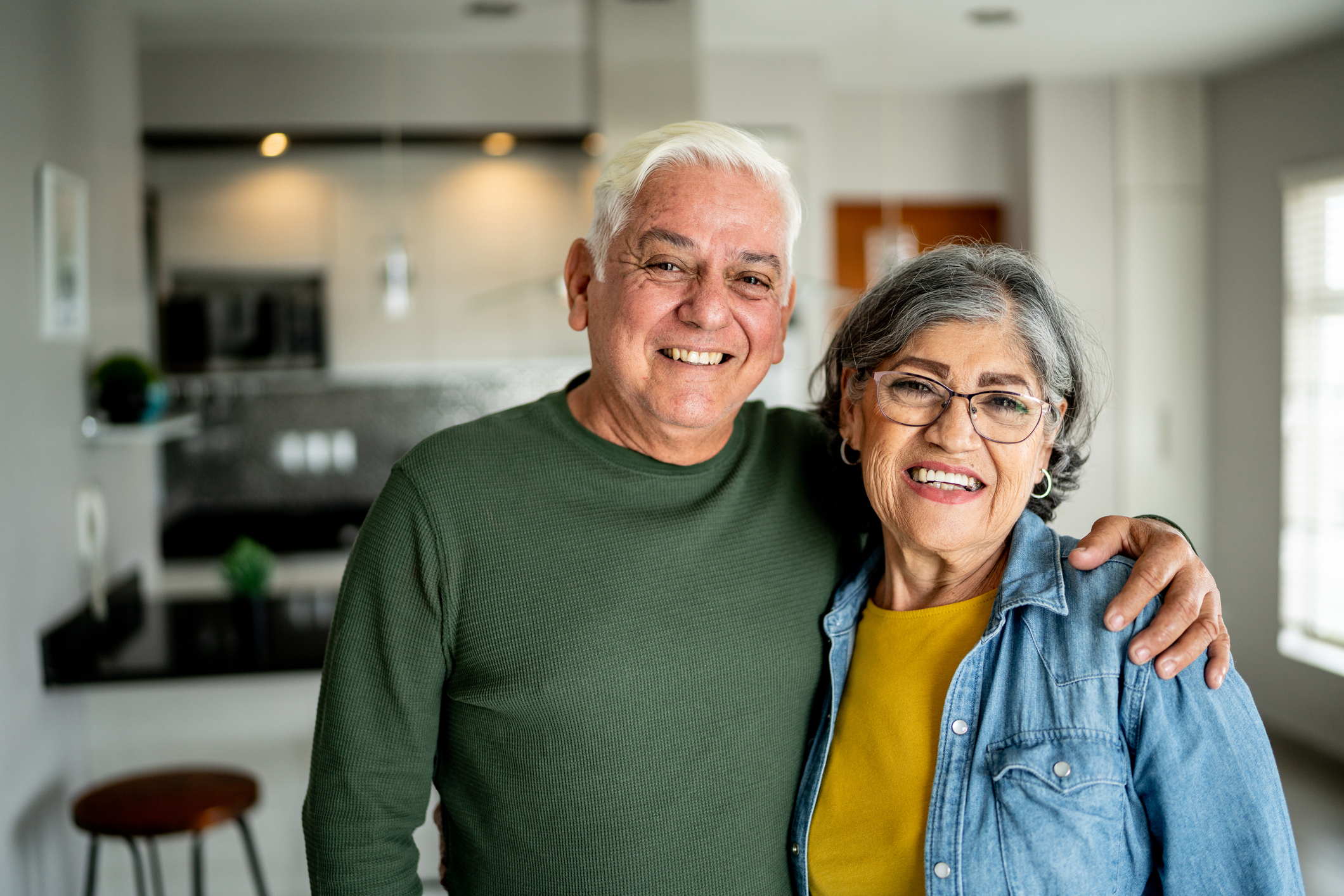
In recognition of National Caregivers Month, this episode explores the vital role of those who support individuals living with vision loss—whether family members, professionals, or volunteers.
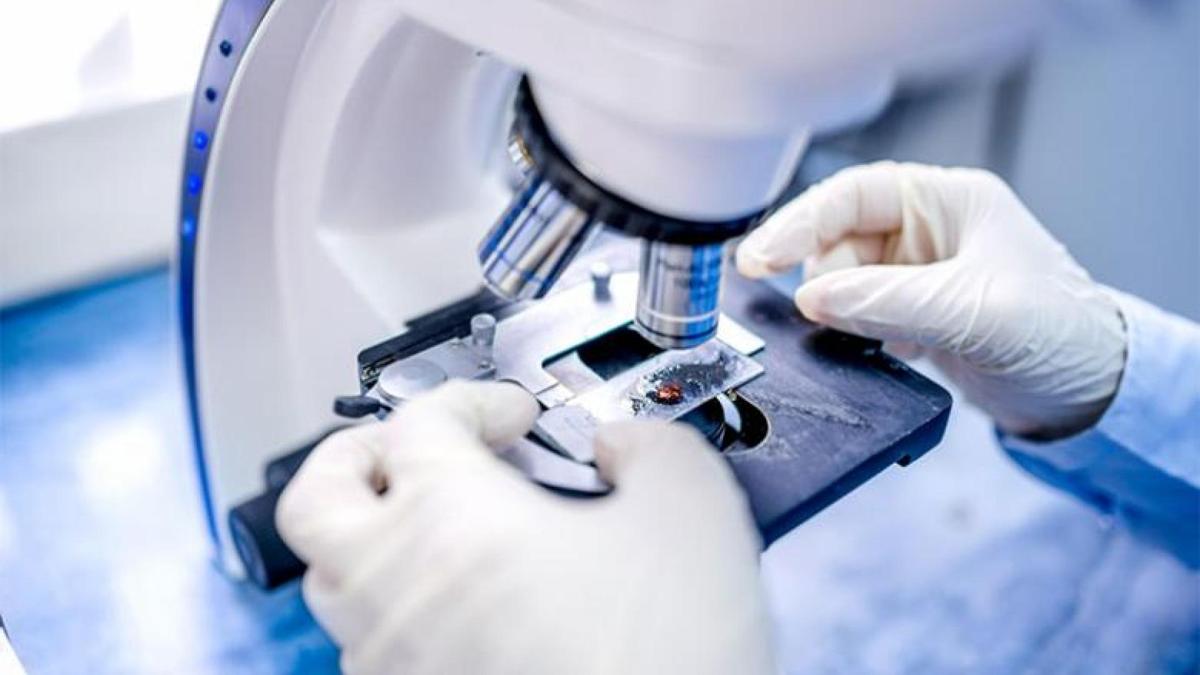
Dr. Jeffrey Stern and Dr. Sally Temple, Principal Investigators and Co-Founders of the Neural Stem Cell Institute, will explain what stem cells are and share the latest updates from clinical trials.
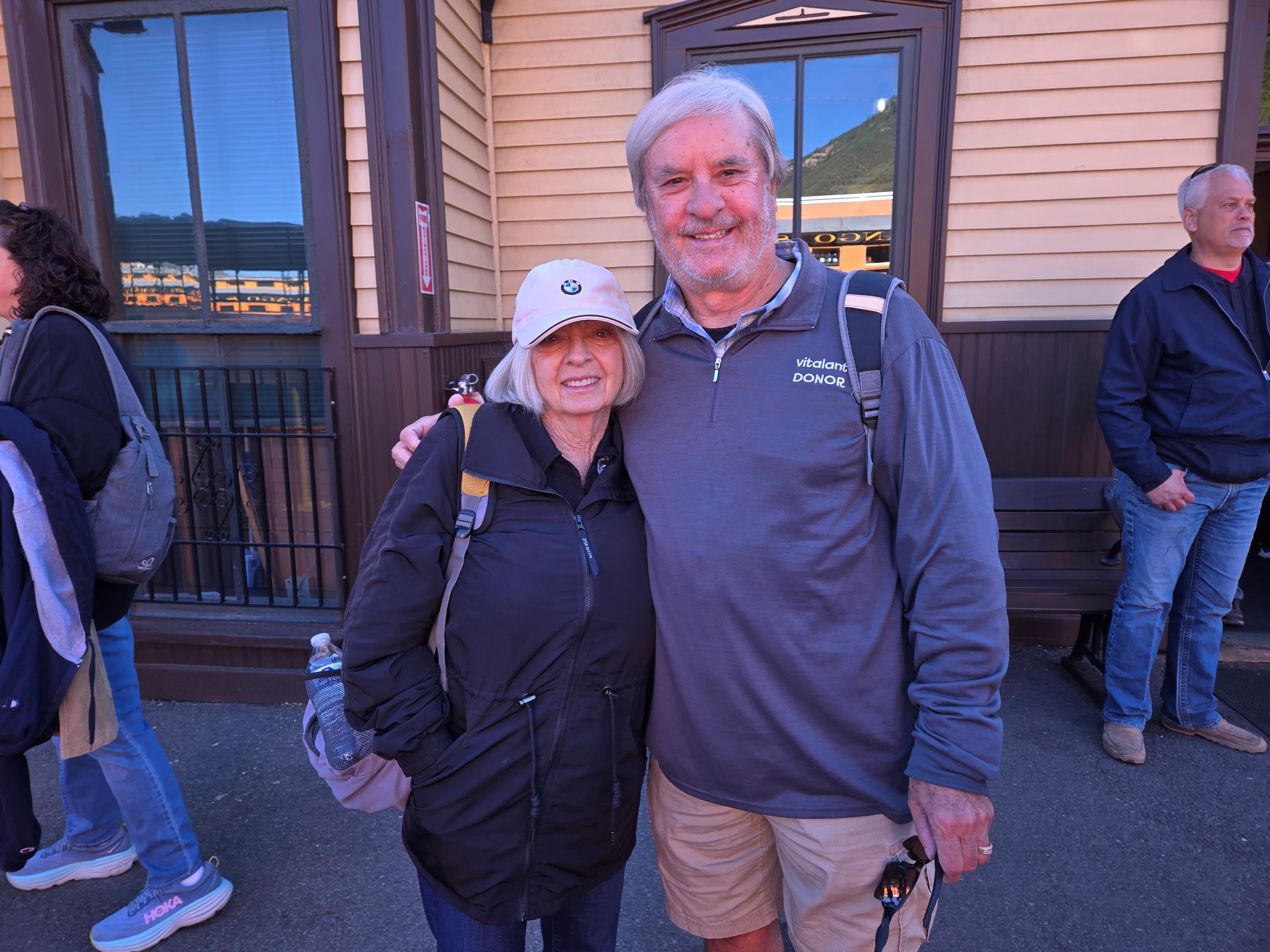
Dave and Leanna Palmer share their commitment to supporting Macular Degeneration Research.
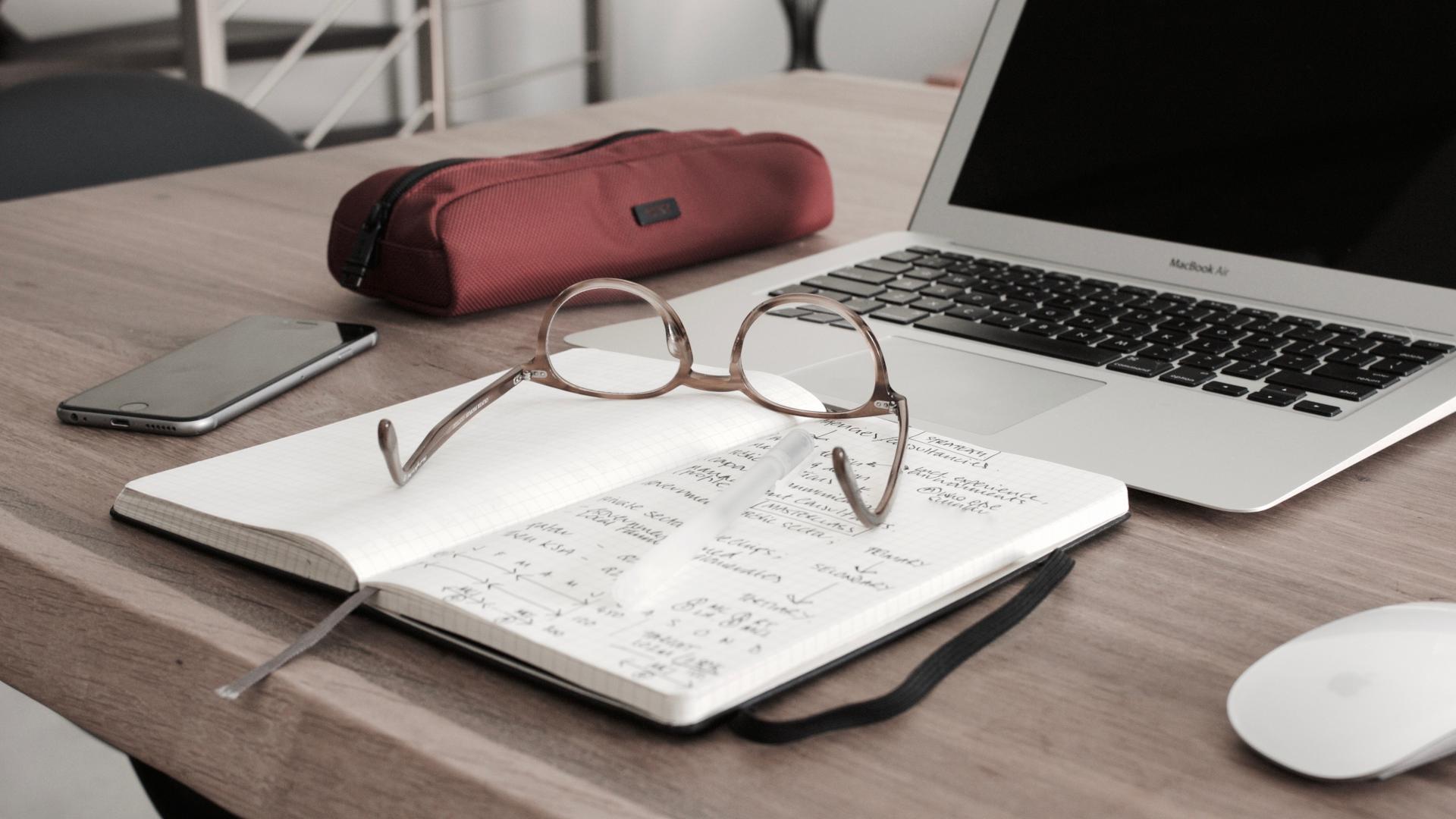
Resources and information that provide products, services, and other support for people with macular degeneration and their families.
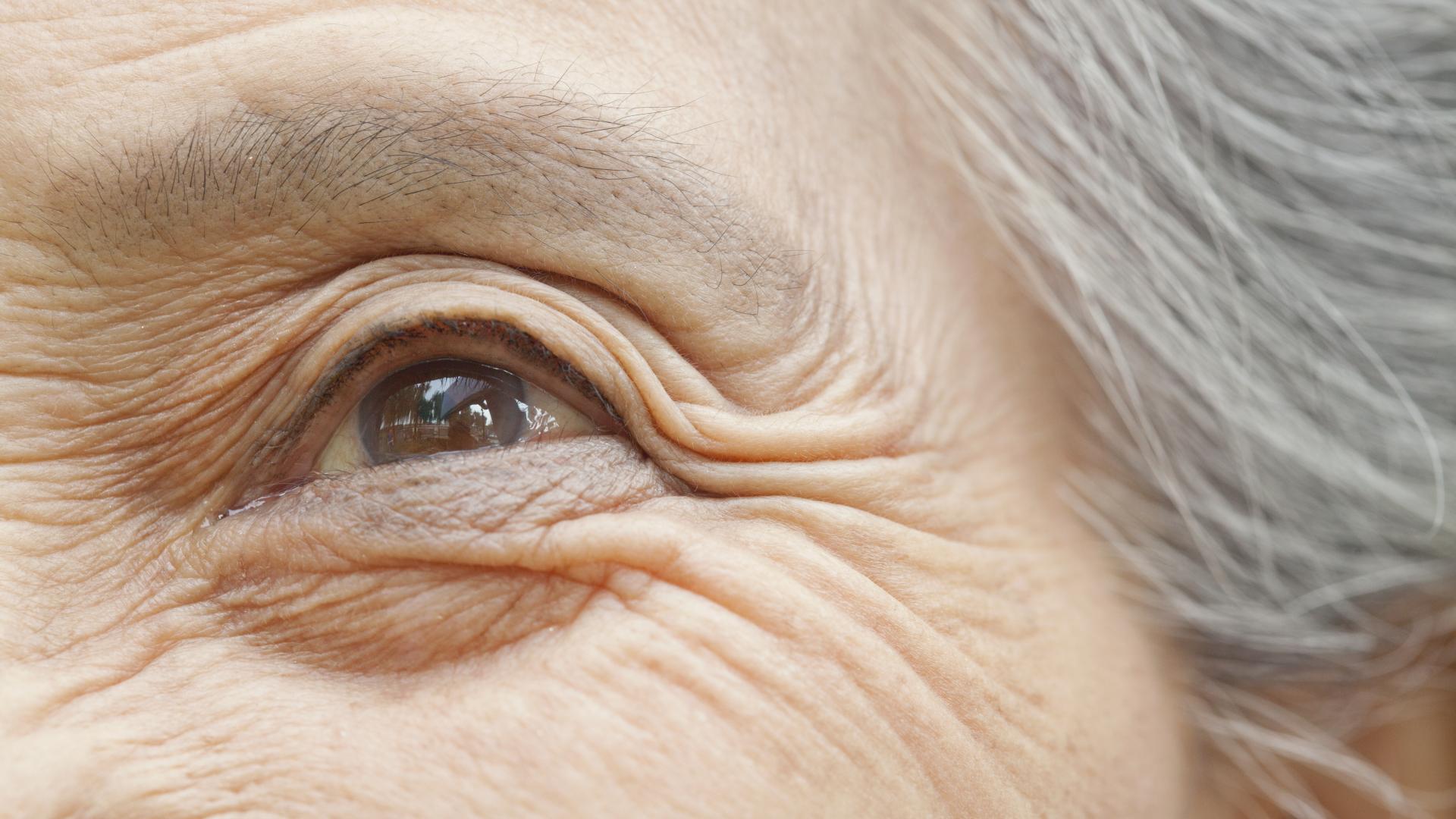
Join Dr. Sara Fard, a retina specialist at Illinois Retina Associates, as she explains the benefits of sustained GA treatment, including slowing the rate of vision loss, protecting retinal tissue, and supporting daily visual function.
Help Fight Macular Degeneration and Save Sight
Your donation helps fund critical research to bring us closer to a cure for this sight-stealing disease and provide vital information to the public.
Donate Today